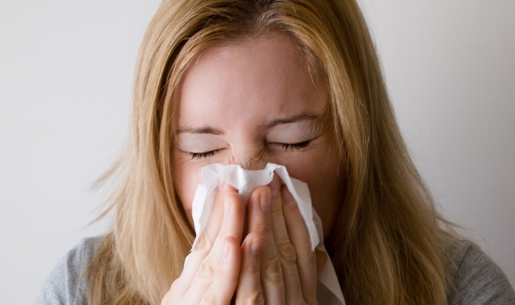Courtesy of the Global Handwashing Partnership
 Ignaz Semmelweis, a Hungarian doctor working in Vienna General Hospital, is known as the father of hand hygiene. In 1846, he noticed that the women giving birth in the medical student/doctor-run maternity ward in his hospital were much more likely to develop a fever and die compared to the women giving birth in the adjacent midwife-run maternity ward. He decided to investigate, seeking differences between the two wards. He noticed that doctors and medical students often visited the maternity ward directly after performing an autopsy. Based on this observation, he developed a theory that those performing autopsies got ‘cadaverous particles’ on their hands, which they then carried from the autopsy room into the maternity ward. Midwives did not conduct surgery or autopsies, so they were not exposed to these particles.
Ignaz Semmelweis, a Hungarian doctor working in Vienna General Hospital, is known as the father of hand hygiene. In 1846, he noticed that the women giving birth in the medical student/doctor-run maternity ward in his hospital were much more likely to develop a fever and die compared to the women giving birth in the adjacent midwife-run maternity ward. He decided to investigate, seeking differences between the two wards. He noticed that doctors and medical students often visited the maternity ward directly after performing an autopsy. Based on this observation, he developed a theory that those performing autopsies got ‘cadaverous particles’ on their hands, which they then carried from the autopsy room into the maternity ward. Midwives did not conduct surgery or autopsies, so they were not exposed to these particles.
As a result, Semmelweis imposed a new rule mandating handwashing with chlorine for doctors. The rates of death in his maternity ward fell dramatically. This was the first proof that cleansing hands could prevent infection. However, the innovation was not popular with everyone: some doctors were disgruntled that Semmelweis was implying that they were to blame for the deaths and they stopped washing their hands, arguing in support of the prevailing notion at that time that water was the potential cause of disease. Semmelweis tried to persuade other doctors in European hospitals of the benefits of handwashing, but to no avail.

A few years later in Scutari, Italy, the Crimean War brought about a new handwashing champion, Florence Nightingale. At a time when most people believed that infections were caused by foul odors called miasmas, Florence Nightingale implemented handwashing and other hygiene practices in the war hospital in which she worked. While the target of these practices was to fight the miasmas, Nightingale’s handwashing practices achieved a reduction in infections.
Sadly, the hand hygiene practices promoted by Semmelweis and Nightingale were not widely adopted. In general, handwashing promotion stood still for over a century. It was not until the 1980s, when a string of
foodborne outbreaks and healthcare-associated infections led to public concern that the United States Centers for Disease Control and Prevention identified hand hygiene as an important way to prevent the spread of infection. In doing so, they heralded the first nationally endorsed hand hygiene guidelines, and many more have followed.
In recent years, handwashing with soap and other forms of hand hygiene have been gaining recognition as a cost-effective, essential tool for achieving good health and nutrition. Now that its effectiveness is no longer in question, the main focus is on how to make handwashing universal. This challenge–sustained handwashing practice at key times–is being met with new thinking about behavior change, such as habit formation and nudges, increased research into the impact of hygiene, and collaboration in organizations such as the Global Handwashing Partnership.



